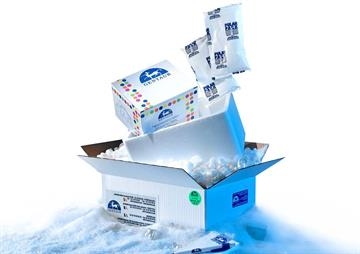Progranulin ELISA Kit (Human) : 96 Wells (OKAG00243)

Progranulin ELISA Kit (Human) : 96 Wells (OKAG00243)
1229.8 €
In Stock
quantity
product details
Catalog number: 247 - OKAG00243
Product Category: Business & Industrial > Science & Laboratory
Aviva Systems BiologyGentaur
Size: 96 Wells
Related Products
OKAG00243
Progranulin ELISA Kit (Human) : 96 Wells (OKAG00243)
Description of target: Granulins are a family of secreted, glycosylated peptides that are cleaved from a single precursor protein with 7.5 repeats of a highly conserved 12-cysteine granulin/epithelin motif. The 88 kDa precursor protein, progranulin, is also called proepithelin and PC cell-derived growth factor. Cleavage of the signal peptide produces mature granulin which can be further cleaved into a variety of active, 6 kDa peptides. These smaller cleavage products are named granulin A, granulin B, granulin C, etc. Epithelins 1 and 2 are synonymous with granulins A and B, respectively. Both the peptides and intact granulin protein regulate cell growth. However, different members of the granulin protein family may act as inhibitors, stimulators, or have dual actions on cell growth. Granulin family members are important in normal development, wound healing, and tumorigenesis.;Species reactivity: Human;Application: ELISA;Assay info: Quantitative Colorimentric Sandwich ELISA;Sensitivity: 63 pg/mL
1229.8 €
OKEH00203
KIT ELISA Kit (Human) : 96 Wells (OKEH00203)
Description of target: Tyrosine-protein kinase that acts as cell-surface receptor for the cytokine KITLG/SCF and plays an essential role in the regulation of cell survival and proliferation, hematopoiesis, stem cell maintenance, gametogenesis, mast cell development, migration and function, and in melanogenesis. In response to KITLG/SCF binding, KIT can activate several signaling pathways. Phosphorylates PIK3R1, PLCG1, SH2B2/APS and CBL. Activates the AKT1 signaling pathway by phosphorylation of PIK3R1, the regulatory subunit of phosphatidylinositol 3-kinase. Activated KIT also transmits signals via GRB2 and activation of RAS, RAF1 and the MAP kinases MAPK1/ERK2 and/or MAPK3/ERK1. Promotes activation of STAT family members STAT1, STAT3, STAT5A and STAT5B. Activation of PLCG1 leads to the production of the cellular signaling molecules diacylglycerol and inositol-1,4,5-trisphosphate. KIT signaling is modulated by protein phosphatases, and by rapid internalization and degradation of the receptor. Activated KIT promotes phosphorylation of the protein phosphatases PTPN6/SHP-1 and PTPRU, and of the transcription factors STAT1, STAT3, STAT5A and STAT5B. Promotes phosphorylation of PIK3R1, CBL, CRK (isoform Crk-II), LYN, MAPK1/ERK2 and/or MAPK3/ERK1, PLCG1, SRC and SHC1.;Species reactivity: Human;Application: ;Assay info: Assay Methodology: Quantitative Sandwich ELISA;Sensitivity: 1.2 ng/mL
1136.2 €
OKEH00092
IL11 ELISA Kit (Human) : 96 Wells (OKEH00092)
Description of target: Directly stimulates the proliferation of hematopoietic stem cells and megakaryocyte progenitor cells and induces megakaryocyte maturation resulting in increased platelet production.;Species reactivity: Human;Application: ;Assay info: Assay Methodology: Quantitative Sandwich ELISA;Sensitivity: 3.9 pg/mL
902.2 €
OKEH00094
IL12B ELISA Kit (Human) : 96 Wells (OKEH00094)
Description of target: Associates with IL23A to form the IL-23 interleukin, an heterodimeric cytokine which functions in innate and adaptive immunity. IL-23 may constitute with IL-17 an acute response to infection in peripheral tissues. IL-23 binds to an heterodimeric receptor complex composed of IL12RB1 and IL23R, activates the Jak-Stat signaling cascade, stimulates memory rather than naive T-cells and promotes production of proinflammatory cytokines. IL-23 induces autoimmune inflammation and thus may be responsible for autoimmune inflammatory diseases and may be important for tumorigenesis.;Species reactivity: Human;Application: ;Assay info: Assay Methodology: Quantitative Sandwich ELISA;Sensitivity: 12 pg/mL
902.2 €
OKEH00096
IL12A ELISA Kit (Human) : 96 Wells (OKEH00096)
Description of target: Cytokine that can act as a growth factor for activated T and NK cells, enhance the lytic activity of NK/lymphokine-activated Killer cells, and stimulate the production of IFN-gamma by resting PBMC.;Species reactivity: Human;Application: ;Assay info: Assay Methodology: Quantitative Sandwich ELISA;Sensitivity: 15 pg/mL









